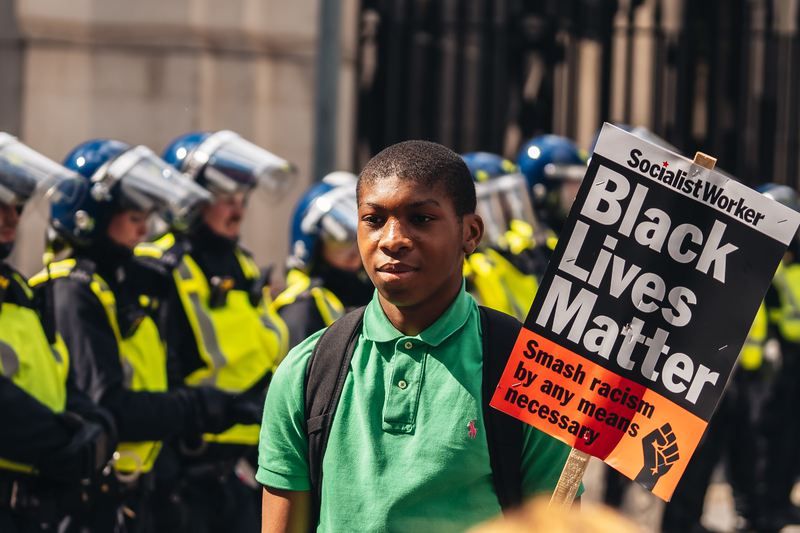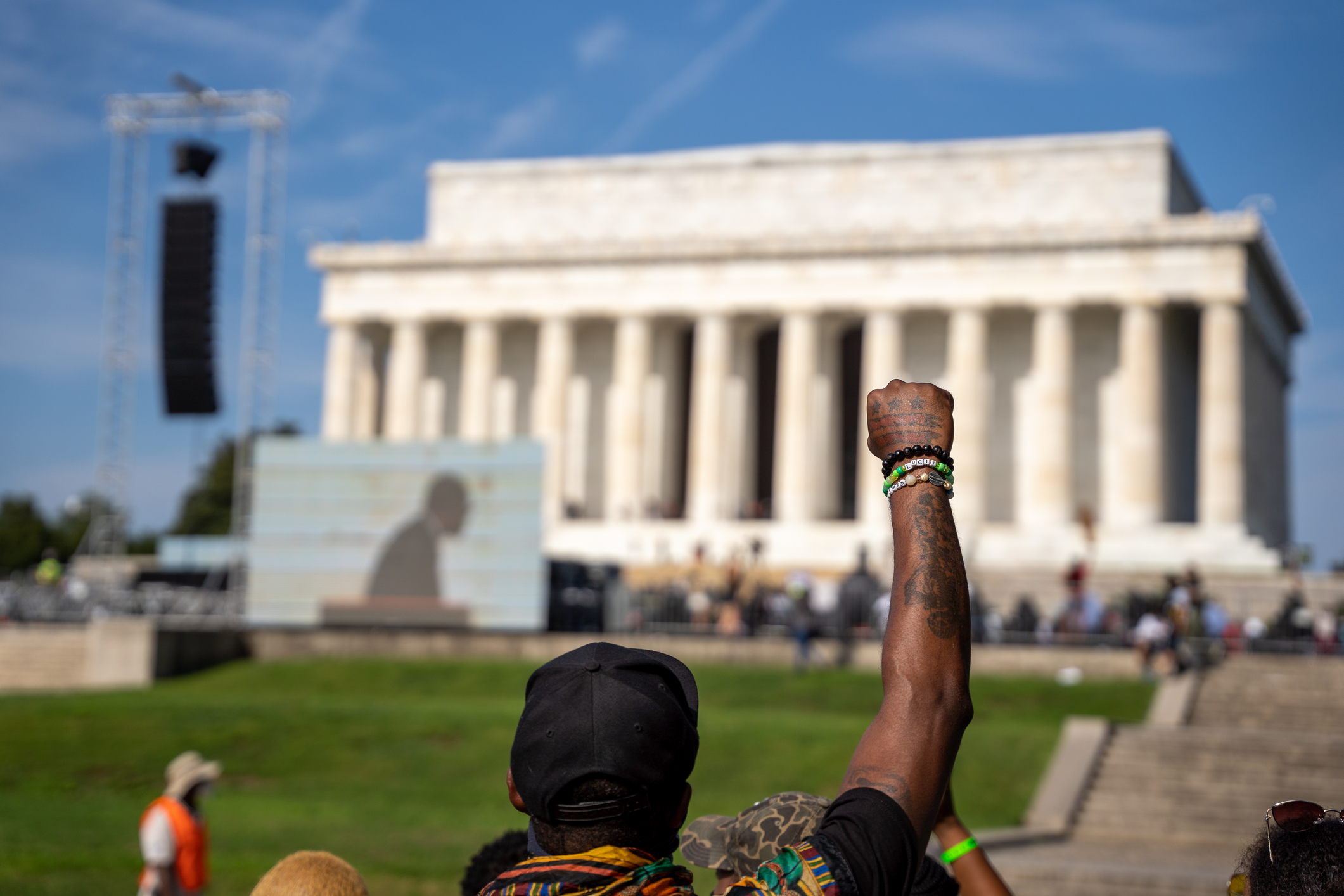After the Race Relations Act of 2000 and the MacPherson Report (1999), a national target to increase racial and ethnic diversity among the UK’s police forces was enacted. Such actions are founded on the belief that increasing the racial and ethnic diversity of the police would help ‘dismantle’ institutional racism, change the organisational culture(s) within police forces, and improve police and community relations, especially with communities with historically low trust in the police (Lammy Review, 2017). Increasing diversity of the UK’s police forces remains a top priority in light of the recent Uplift initiative which will provide funding for the addition of 20,000 police officers across England and Wales over three years.
Some immediate changes may include specific training and strategies that can be rapidly implemented by police forces and individual police officers that constitute what Paul Butler, Georgetown Law professor and author of the 2017 book Chokehold: Policing Black Men, refers to as a ‘more liberal framing’ approach to the problems between Black communities and the police. Butler refers to this as the approach espoused by the US’s Obama administration. It emphasises ‘the need to bring people together alongside tangible reforms like more body cameras and better training’. Butler concedes that this approach is likely ‘not going to crush white supremacy’, but he believes that this approach and reforms it entails can save lives: ‘If Sandra Bland and George Floyd can live rather than die, I’m cool with that on the way to transformation’ (Illing, 2020).
Recommendations from the Obama Administration’s Task Force on 21st Century Policing (2015) have sparked interest in research on practice to go beyond the focus on individual police officer behaviour that is ‘aimed at training officers away from acting on racist or stereotypical beliefs to exploring ‘how some of policing’s institutional structures and practice contribute to racial discrimination’ (Epp, Maynard-Moody and Haider-Markel, 2017, p. 169). Furthermore, with the recent election of Joe Biden to the US presidency, there is renewed action in the US to implement national guidelines regarding accountability for the use of force by police.
Ultimately, we need to move away from an 'us' and 'them' orientation ... and work towards building bridges and increasing communication between the public and the policeUltimately, we need to move away from an ‘us’ and ‘them’ orientation (whether from a police or community position) and work towards building bridges and increasing communication between the public and the police. Part of the way forward will necessitate changing mindsets and behaviours to increase dialogue and transparency between communities and the police who serve them, and more work to acknowledge and address practices that exacerbate racial disproportionality in the criminal justice system and already strained community relations. The drive to increase the racial/ethnic diversity of police forces in the UK is an important step, but more work will need to be done to enact meaningful organisational change beyond shifting the demography of officers (see Lavoie, 2014, who uses Foucault’s theory of disciplinary power to discuss of how institutional racism can endure within organisations, even when the workforce is racially and ethnically diverse).
The benefit of applying a Critical Race Theory (CRT) perspective is that it would seem to draw a clear link between racial disproportionality in the criminal justice systems within both countries as being a manifestation of institutional, structural, and systemic racism endemic in Western democracies (Delgado and Stefancic, 2007). However, there are many other sociological approaches and theoretical frameworks through which to explore these phenomena.
The utility of CRT is that it is premised on the acknowledgement of systemic racism in institutions, which is an important first step in efforts to change organisational cultures and society more broadly. However, it is somewhat unclear where to go from there. Whilst institutional racism perspectives and CRT highlight the general systems and processes that maintain racial inequality, it is important to recognise this can conflate or dilute the meaning of racism (Miles, 1989) or focus on moral condemnation and placing of blame (van der Berghe, 2001) on individuals. The point of CRT and concepts such as institutional racism are not to ‘blame the innocent’, but to improve our understanding of the ways policies, practices, and processes perpetuate racial inequality such that they can be identified and ‘dismantled’ (Clair and Denis, 2015). Simultaneously, a narrow focus on institutional racism can obscure or absolve individual actions and actors’ roles in maintaining the status quo. Therefore, it is important to examine the interplay of individual and institutional practices.
It is important to examine the interplay of individual and institutional practices.Mason (1982) argued the term institutional racism ‘would forever be a political slogan lacking in analytical rigour until it could be more precisely conceptualised, theorised and subjected to empirical investigation’ (Phillips, 2011, p. 173). Drawing on Phillips’ (2011) work, she argues that despite the conceptual limitations and ambiguities of ‘institutional racism’, it has usefulness for understanding persistent racial inequalities in social welfare outcomes. Philips (2011) advocates for a reconceptualisation of ‘institutional racism’ that is situated in a conceptual framework centred on ‘racialisation’ as conceived by Rattansi (2005). This conceptual framework explores the role of racialisation at micro, meso, and macro levels. Institutional racialisation, as opposed to institutional racism, ‘provides a multi-layered, multi-dimensional frame . . . [that] allows the intersections of race with class, gender, sexuality and nation to be incorporated into an empirical investigation (Phillips, 2011, p. 174).
This shift provides more nuanced explorations and explanations of longstanding ethnic and racial inequalities observed in criminal justice outcomes. The multi-layered framework of racialisation may provide ‘possible intervention points’ in policy and practice at the micro, meso, and macro levels to contribute to the elimination of racial inequalities. Moreover, the shift to ‘institutional racialisation’ may ‘neatly avoid the perceived binary essence of racism and its deeply polarising effect’ (Phillips, 2001, p. 175). It does this through a multi-level approach that can ‘more clearly specify the mechanisms and interacting processes through which ethnic inequalities are reproduced and sustained . . . and counter the confusion engendered by the elision of individual and institutional forms of racialisation in the Macpherson Report’ (p. 176).

Summary of this collection of articles
This collection does not intend to illustrate an overly simplistic picture of policing in the US or England and Wales. Moreover, the comparison(s) drawn between policing in the US and the UK are much more complex and nuanced than explored here. The material differences in contexts, histories of police force development, demography, scale and cultural norms between (and within) the US and UK are evident. Rather, the intent is to discuss some similarities in terms of racism in both countries and how it manifests in policing. This discussion demonstrates that there is more work to be done in both the US and the UK to inform change. Another aim is that this will interest readers in broadening their analytical frames and approaches when thinking about and researching issues of race and policing.
In current debates about the future of policing and how to address persistent challenges, there are a wide range of views and reform strategies. The arguments range from ‘defunding the police’ entirely, to more nuanced approaches to shifting funding from policing to more social services as pre-emptive strategies to address social issues, moving to disarming police officers in the US, to counterarguments about the critical roles police organisations serve to maintain public safety and reduce crime. Vitale’s (2017) The End of Policing has sparked a great deal of debate about the future of policing in the US and has been both embraced and rigorously critiqued. There is a wide range of articles that include strong opposition to ‘defunding’ of the police and provide a great deal of evidence to support this case. It is necessary to look critically at the research and evidence before jumping to conclusions and weighing the multiplicity of views in this complex policy and practice area.
Ultimately, as Seth Stoughton, former police officer and Professor of Law at the University of South Carolina, explains, ‘I have become convinced that we do not have a race problem in policing, rather we have a race problem in society that is reflected in policing’ (Peeples, 2020, p. 23). If we believe this is true, then we have much collective work to do. In order to address racial inequality and disproportionality in the criminal justice system, we need to better understand how racism (in various forms) is implicated in the systems, organisations and institutions that we work in or engage with as community members. We need to strive for a better understanding of the processes, policies, and practices that perpetuate racism as well as reflecting on our own identities, spaces where we are advantaged and disadvantaged, and our beliefs and actions. To enhance racial equality and ‘dismantle’ racism will include simultaneously addressing individual beliefs and actions, organisational culture(s) and practices that perpetuate institutional racism and systemic racism in society at large.







Rate and Review
Rate this article
Review this article
Log into OpenLearn to leave reviews and join in the conversation.
Article reviews